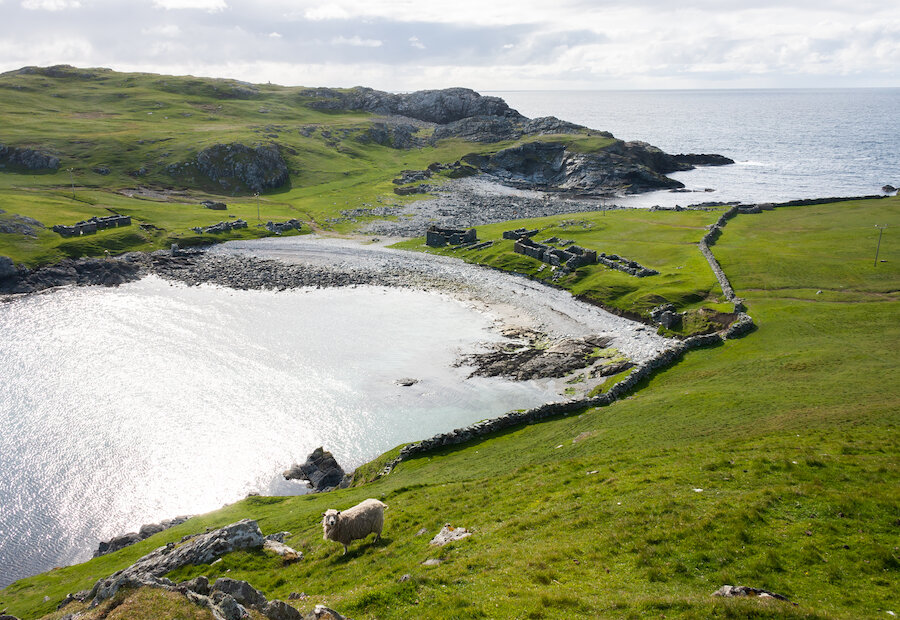The beach at Fethaland, in the far north of the district of Northmavine, has powerful historical associations. Today, this is one of the remoter corners of Shetland, reached on foot by a track from Isbister, three kilometres to the south.
During the 19th century it was the scene of intense activity. It was from here – and other places like it – that fishermen set out on perilous expeditions to catch the fish that paid their rent. They used ‘sixareens’, six-oared boats, and would search for cod, ling or other species fifty miles or more offshore. Some trips ended in tragedy, the boats being overwhelmed by sudden squalls. Fethaland was one of the largest of Shetland’s summer ‘fishing stations’, with the remains of around twenty of the booths clearly visible; at times, perhaps 400 fishermen and shore workers would have made a hard living here.
Those exploring the area will also find evidence of much earlier inhabitants in the form of the remains of a broch, other prehistoric structures and soapstone workings. All of this makes for a fascinating walk.
